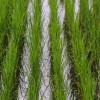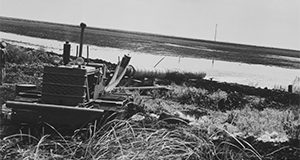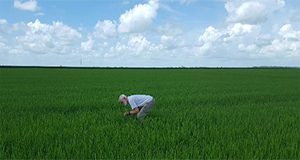This 5-page document pertains to the UF/IFAS Extension programs related to rice production in the EAA and focuses on the steps that comprise postharvest processing of rice (drying, tempering, milling, and storage). It aims to highlight the physiology of the rice kernel and define some of the common terms used in the rice industry, elaborate on the steps in postharvest processing, and provide a brief overview of rice products and their market potential. Written by Jehangir H. Bhadha, Sangeeta Mukhopadhyay, Charlene Andrews, and Matthew VanWeelden, and published by the UF/IFAS Agronomy Department, September 2019.
http://edis.ifas.ufl.edu/ag438
Tag: Rice Production
Rice Water Weevil (Coleoptera: Curculionidae) Distribution and Management in Florida
The rice water weevil, Lissorhoptrus oryzophilus Kuschel, is the most widely distributed and destructive pest of rice in the United States. This 4-page fact sheet written by Matthew T. VanWeelden and Ron Cherry and published by the Department of Entomology and Nematology provides a description of the rice water weevil, its distribution in the state of Florida, methodology for scouting, and options for managing this pest in commercial rice fields.
http://edis.ifas.ufl.edu/in1167
Trends in Rice Production and Varieties in the Everglades Agricultural Area
Rice production in the Everglades Agriculture Area (EAA) of Florida dates back nearly seven decades. For a brief period in the 1950s about 2,000 acres of rice was grown in the EAA. Rice was reintroduced in the EAA in 1977 after it was demonstrated that rice could be successfully incorporated into the sugarcane production cycle during the fallow period. This three-page fact sheet provides a history of rice production in Florida and information about rice varieties grown in Florida. Written by Jehangir H. Bhadha, Luigi Trotta, and Matthew VanWeelden and published by the Soil and Water Sciences Department.
http://edis.ifas.ufl.edu/ss653
Weed Management in Rice
 Successful weed control is essential for economical rice production in the Everglades Agricultural Area. Weeds reduce rice yields by competing for moisture, nutrients, and light during the growing season. Weed infestations can also interfere with combine operation at harvest and can significantly increase harvesting and drying costs. Weed seed contamination of rice grain lowers grain quality and may lower the cash value of the crop. As with any biological system, an effective weed management program must consider many factors that vary from crop to crop and year to year. The most important of these factors include planting date, climatic conditions, seedbed preparation, seed quality, stand establishment, and water management. This 5-page fact sheet was written by D.C. Odero and C. Rainbolt, and published by the UF Department of Agronomy, October 2014. (Photo: C. Odero, UF/IFAS)
Successful weed control is essential for economical rice production in the Everglades Agricultural Area. Weeds reduce rice yields by competing for moisture, nutrients, and light during the growing season. Weed infestations can also interfere with combine operation at harvest and can significantly increase harvesting and drying costs. Weed seed contamination of rice grain lowers grain quality and may lower the cash value of the crop. As with any biological system, an effective weed management program must consider many factors that vary from crop to crop and year to year. The most important of these factors include planting date, climatic conditions, seedbed preparation, seed quality, stand establishment, and water management. This 5-page fact sheet was written by D.C. Odero and C. Rainbolt, and published by the UF Department of Agronomy, October 2014. (Photo: C. Odero, UF/IFAS)
http://edis.ifas.ufl.edu/wg001
Weed Management in Rice (SSAGR10/WG001)
Successful weed control is essential for economical rice production in the Everglades Agricultural Area (EAA). Refer to this revised 5-page fact sheet for current management recommendations. Written by D.C. Odero and C. Rainbolt, and published by the UF Department of Agronomy, March 2011.
http://edis.ifas.ufl.edu/wg001


